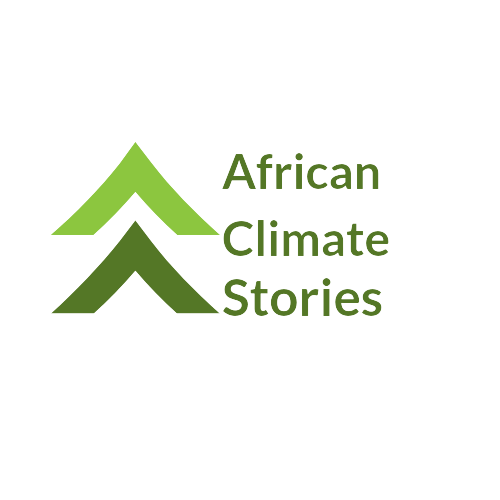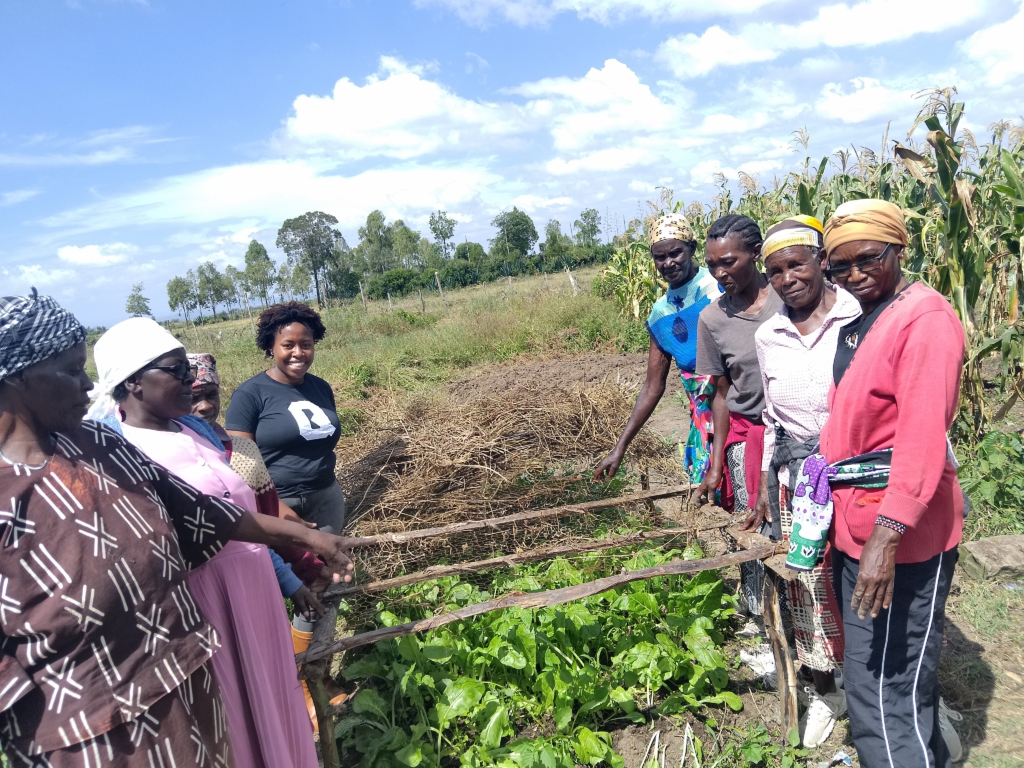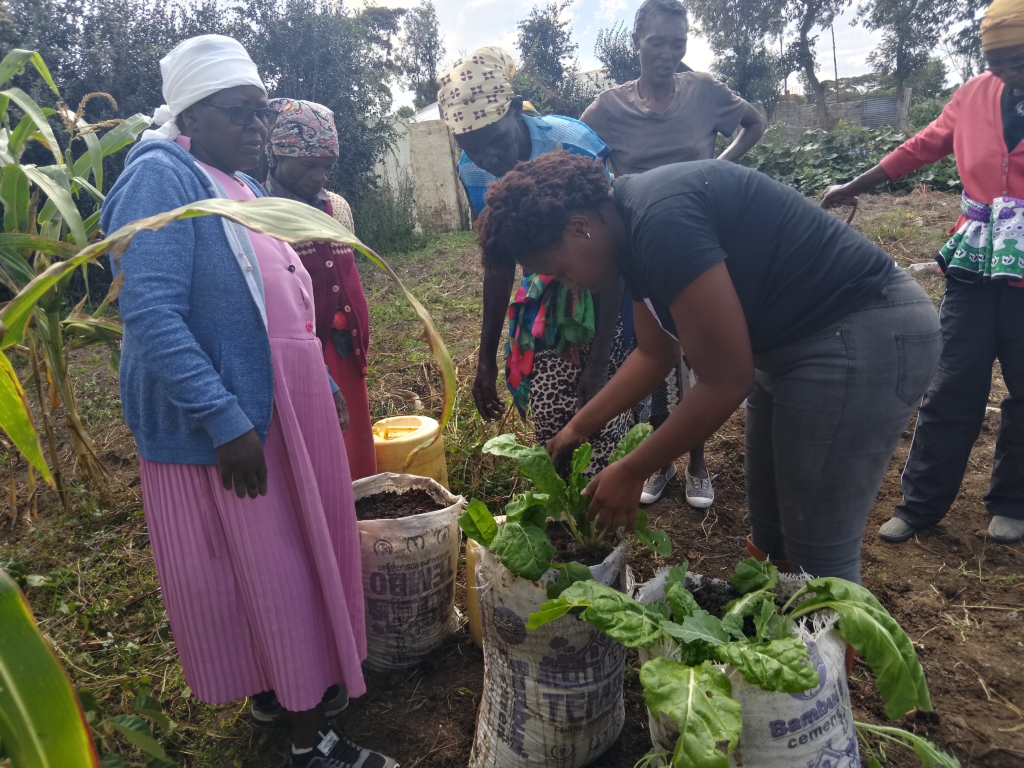Our Storyteller of the Month of April is Kamonjo Mercy Wanjiku from Kenya. Let’s get to meet her.
Who is Kamonjo Mercy Wanjiku?
I am a sustainability expert, food security activist and founder of Kuza Generation Initiative. A non-profit organization that works with grassroot communities most vulnerable to the impacts of climate change to create resilience and build adaptability to these severe impacts. I am an advocate for social development and most importantly women and girls empowerment especially since I am a result of someone holding my hand as well. Therefore, I believe that for a nation to be productive, its women and girls have to be empowered greatly.
What personal experiences sparked your passion for environmental advocacy?
Growing up in an agricultural viable region, Nakuru County, had me privileged with readily available food products. My parents, although subsistent farmers, could segregate some surplus produce which they could sell to our neighbors or to the market. For decades, we depended wholly on our farm produce until a season when the agricultural produce dropped significantly that we could barely have enough to sustain our family of four. In the quest to understand the causes of our new food shortage reality, I could asked my mom numerous questions and she shared that farming is like gambling, you can never know your reward until the end of the game. It was the first time experiencing extreme food shortage and the fact that it could have been just a bad season didn’t seem to calm my curiosity. This season stood out and set me on a course to pursue the answers that I so needed.
How do you believe storytelling can effectively communicate the urgency of the environmental problems facing Kenya?
Storytelling helps paint the actual picture of the realities that grassroot communities are facing. It acts as a visual connector, the different forms of storytelling help one put themselves in their exact shoes’ and realize just how dire their situation is for immediate action. According to the Kenya National Bureau of Statistics, only about 33% of my people have access to internet and of this, majority are located in the urban areas. Placing storytelling as one of the most effective mode of information sharing from generation to generation. Storytelling enables us connect with those in different counties experiencing different climatic conditions, for instance, a person in the rift valley can connect with the communities in coastal areas through story telling. This, if taken in to considerable account greatly enables policy makers across the diverse regions make viable decisions regarding the different spectrum of regional boundaries.
Can you share a specific moment where you witnessed the impact of the environmental issue that inspired your commitment to act?
In 2015, while volunteering for a Non-Governmental Organization (NGO), I got the privilege of visiting Kajiado County, an arid and semi-arid area located south of the capital city. During this field work, I got to see how communities were struggling to provide for their families on a daily basis. This was as a result of the drought that had unfolded that and the previous year. Ms. Esther, a single mother of four was struggling to provide for her kids and it is mostly at that moment that the urge to be part of her food security needs was mostly sparked. With extensive research, I realized Ms. Esther’s situation was not in solitude but a shared narrative across numerous households. Many would even miss a meal or two having only one meal a day due to the devastating
drought that had ravaged the community. This being a predominantly pastoral community, their livestock had died due to lack of pasture and water scarcity. These new realities that taught and created a great desire in me. For us to have healthy and productive communities, the environment in which we acquire our resources has to be protected first. People who work with Indigo Productions have something important to say. We enable them to say it in engaging and persuasive ways. We make their message compelling and relatable to their specific audience through creative storytelling and dynamic video production.
What storytelling techniques do you find most impactful in engaging your audience on environmental issues?
Combination of photography and use of infographic is a technique that I find useful. This is especially because my audience can clearly visualize the image I seek to communicate. Short stories help narrate the progress of a project from a concept to implementation for a resourceful outcome.
How do you balance conveying the severity of this environmental problem with inspiring hope and action in your stories?
Emma Goldman quotes ‘The most violent enemy in the society is ignorance’. When communities understand the environmental problems they are facing, it would be lethal to ignore. It is only when communities realize the problems they are facing that they can come up with solutions. In fact, realizing these environmental problems is the first step to solving them. Conveying this to the society is key in ensuring that we remain on course of building a resilience and adaptation plan. Therefore, whenever I interact with communities, I tend to have two or more sides of the story. I convey the problem as well as sharing some of the best cases of where people came together to avert challenges such as the one in question. I make them understand the potential for change and sustainability is always trapped inside them and that they possess the keys to the change they hope to achieve.
Everyone plays a part in communication of environmental issues. Having diverse voices and perspectives enables one concentrate on the issues they are mostly passionate about in the diverse Environmental spectrum.
Kamonjo Mercy Wanjiku
Sustainability Expert and food security activist
Can you share a success story where your storytelling efforts led to positive change or increased awareness?
In 2019, a food security project that I was managing in Kajiado County brought communities together for a training session on Climate smart Agriculture. The project had an incredible impact not only to the households that were directly part of the project but also the whole community especially since the beneficiaries of the project could not only harvest but also sold their surplus produce to their neighbors. Months into the harvesting stage, most of the community members had their own kitchen gardens and vertical gardens and would obtain their vegetables from their own homesteads unlike previously where they would buy from the market. This has seen us traversing 6 counties, Laikipia, Kajiado, Makueni, Nakuru, Nairobi and Kiambu, and numerous sub-counties to train communities on sustainable farming methods as we seek to build resilient communities across Kenya.
What advice do you have for others looking to use storytelling as a tool for climate and environmental advocacy?
Story telling is at heart of effective change that we have for so long desired. This should act as a great driving force of change. They should strive to use narratives that clearly depict exactly what the reality at the grassroot communities is.
How do you navigate communicating complex scientific concepts in a way that resonates with a broad audience?
Over the years, I’ve had a common and quite effective method. Usually, I break it down from the complex concept it is to examples of a normal daily encounter that one would have despite our broad geographical zones. For instance, I break down the issue of Climate change to the fluctuation in amount of rain, temperature and season change that everyone experiences and has experienced over their lifetime. Another example is food security, everyone needs to eat to survive and therefore, using this background to explain factors that affect food security has always been effective. Therefore, bringing down these concepts to things and events that people experience on a daily or seasonal basis has worked for me as a great way of ensuring I am at par audience.
What role do diverse voices and perspectives play in effective communication of environmental issues?
Everyone plays a part in communication of environmental issues. Having diverse voices and perspectives enables one concentrate on the issues they are mostly passionate about in the diverse Environmental spectrum. Repetition has for a very long time been an effective tool for marketers and other entities to make their respective audience by into their narrative. In our case, the more communities are engaged by different personalities on environmental matters, the more they are likely to take action. This in sense demonstrate the importance of diverse voices and perspectives in effective communication of environmental issues.

How do you personally cope with the emotional toll of engaging with environmental challenges in your storytelling?
The environmental space just like any other sector has its hurdles. I am greatly fortunate to have immense backing from my family. I am also part of youth collaborative networks where we share our experiences and support each other. With this support, I am able to focus on advocacy as I reflect on the goal ahead.
What advice do you have for young people who want to venture into environmental and climate change advocacy using storytelling?
Young people are the largest in population in the African continent, as of last year (2023), around 40% of the population was aged 15 years and younger and although the median age on the continent has been increasing gradually, it remains low at 20 years. This means that we have a great capacity and responsibility to change our continent and see the changes we desire. Young people with the desire to venture into climate and environmental advocacy have to realize that they are already being affected by the very problems that they’re keen to address and there is no better time for us to collaborate as now.
We hope you enjoyed this piece.
If you will like to be featured as one of our Climate Storyteller’s of the month? Kindly use this link to indicate interest or share with friends who qualify: African Climate Stories – Storyteller of the Month.







Comments
Vickey